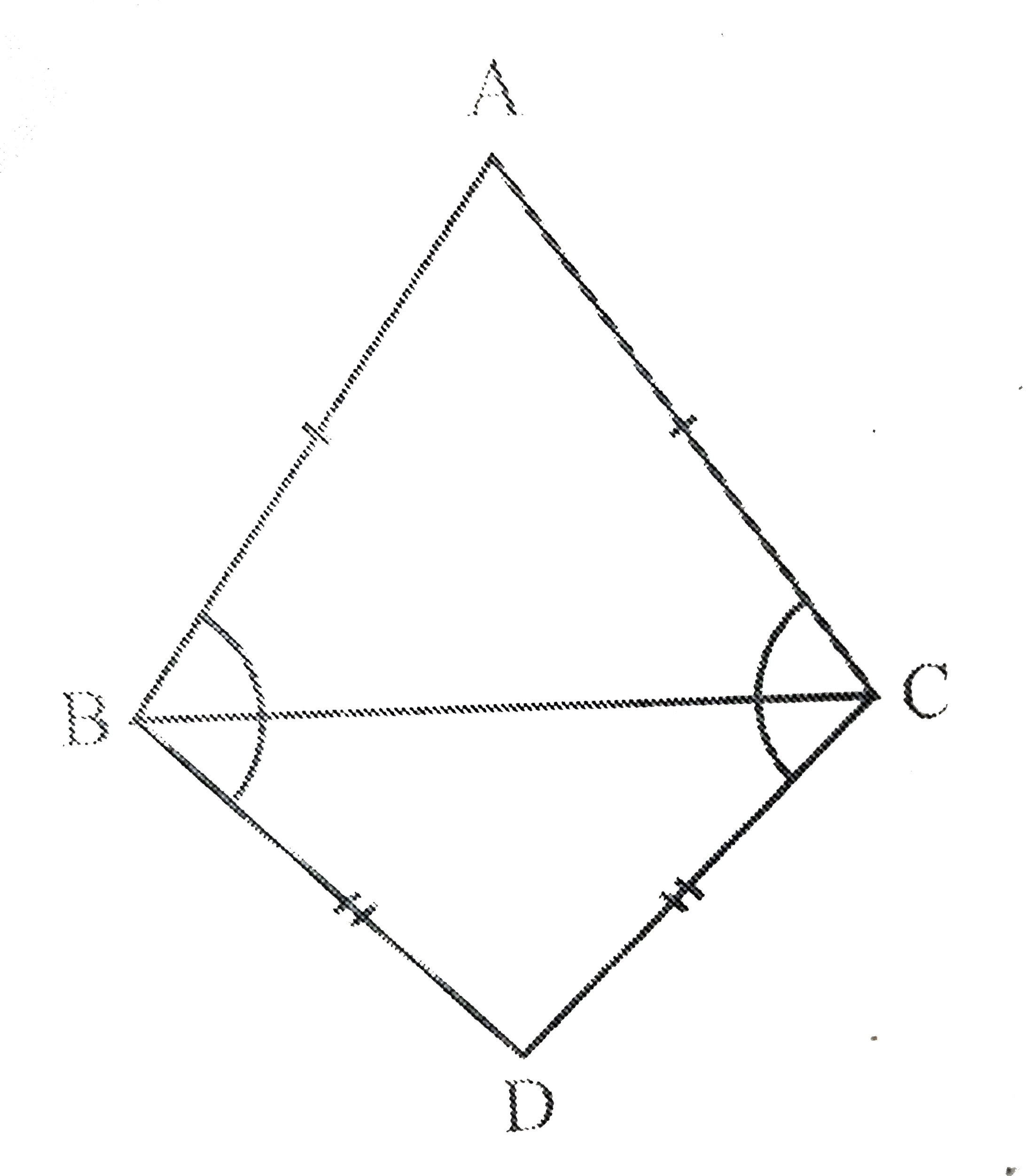ABC is an isosceles triangle in which AB= AC . Side BA is produced to D such that AD = AB (see Fig. 7.34). Show that ∠BCD is a right angle.
(##IX07_E0206_s01##)
In isosceles triangle ABC,
AB=AC (Given)
∴∠ACB=∠ABC (Angles opposite to equal sides of a triangle are equal)
Let ∠ACB=∠ABC be x. ----------- (1)
In ΔACD,
AC=AD (Since, AB = AD)
∴∠ADC=∠ACD (Angles opposite to equal sides of a triangle are equal)
Let ∠ADC=∠ACD be y. ----------- (2)
Thus, ∠BCD=∠ACB+∠ACD=x+y----------- (3)
In ΔBCD,
∠ABC+∠BCD+∠ADC=180∘ (Angle sum property of a triangle)
Substituting the values we get,
x+(x+y)+y=180∘ [From equation (1), (2) and (3)]
2(x+y)=180∘
2(∠BCD)=180∘ [From equation(3)]
∴ ∠BCD=90∘
Similar Questions
ABC is an isosceles triangle with AB=AC. Side BA is produced to D such that AB=AD. Prove that ∠BCD is a right angle.
View SolutionIn an isosceles triangle ABC with AB=AC, D and E are points on BCsuch that BE=CD(see Fig. 7.29). Show that AD=AE
View SolutionD is a point on side BC of ΔABCsuch that AD = AC(see Fig. 7.47).Show that AB > AD.
View SolutionABC is an isosceles triangle with AB=AC and D is a point on AC such that BC2=ACxCD. Prove that BD=BC
View SolutionABC is an isosceles triangle with AB=AC and D is a point on AC such that BC2=ACXCD. Prove that BD=BC.
View SolutionABC is an isosceles triangle in which AB=AC. AD bisects exterior angle PAC and CD∣∣AB. Show that(i) ∠DAC=∠BCA and (ii) ABCD is a parallelogram.
View SolutionIn a triangle ABC, if AB=AC and AB is produced to D such that BD=BC, find ∠ACD : ∠ADC
View SolutionABC is a triangle in which AB=AC and D is any point in BC . Prove that AB2−AD2=BDCD .
View SolutionABC and DBC are two isosceles triangles on the same base BC (see Fig. 7.33). Show that∠ABD =∠ACD

View SolutionABC is a right angled triangle in which ∠A=900and AB=AC. Find ∠B and ∠C
View Solution